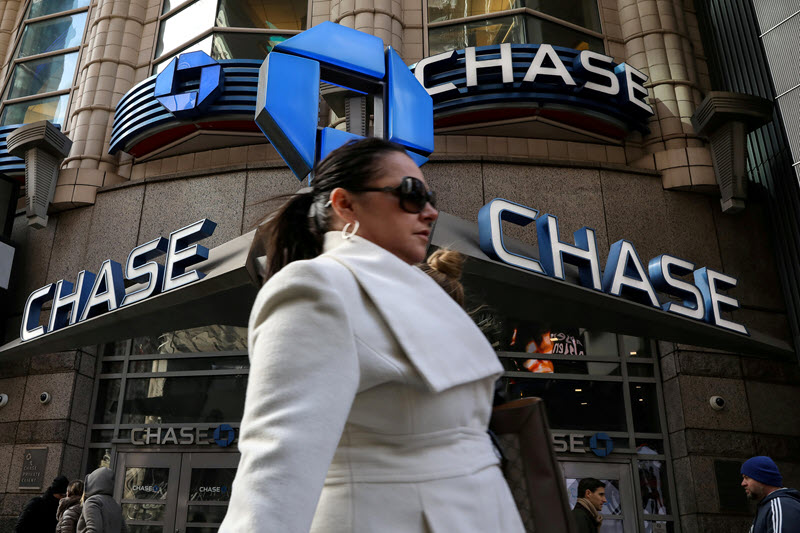From titans of finance to mom-and-pop investors, it’s easy to see why more people have been drawn to cash as interest rates have climbed and remain high.
What these rate chasers may not like — and what some may not be ready for — is the coming tax bill.
Prepping for the tax consequences of interest income has re-emerged recently on financial planners’ to-do lists, according to experts at banks, wealth advisory firms and major accounting firms.
“We haven’t seen this in a while, because interest rates have been so low for long,” said Kelly Gillette, partner at Armanino, a national accounting and consulting firm.
Capital gains such as stock sales and qualified dividends are taxed at 0%, 15% or 20%, depending on the taxpayer’s income.
Interest income from savings accounts, bank certificates of deposit, money market mutual funds and Treasury debt is a different matter. It’s easy to find these products offering at least 5% interest to account holders and investors — at least before the taxman takes his cut.
The IRS treats interest earnings as ordinary income. It gets lumped with other money, like wages, that is subject to income tax rates running from 10% to 37%. The swirl of tax rules and market conditions may also mean more households will owe an additional 3.8% investment tax for these yields.
“It makes sense to see the monthly endorphin high when you get your bank statement,” said Arijit Roy, head of consumer segment and solutions at U.S. Bank
USB,
“Remember that when it comes to January, February, March or April of next year, you’re going to have to pay a lot of that back in taxes and there’s not a lot of awareness.”
At U.S. Bank, Roy said he and his team are working with bankers in more than 2,300 branches and with other banking team members to make sure clients understand the tax implications of loading into deposits.
The average value of CDs in U.S. Bank’s book of business is now around $50,000, according to Roy. “We are not talking about a non-trivial impact during tax time. So that is going to bite.”
Higher interest rates are putting a fresh twist on tax-efficient investment, said Robert Keller of KPMG, one of the “Big Four” accounting firms.
“We’re certainly trying to raise the awareness,” said Keller, a partner in the firm’s Washington National Tax office. “Whenever you have taxpayers that are meaningfully changing their asset allocation it creates a different-looking return than what they might have been used to before.”
In October, investors increased exposure to cash and bonds in their portfolios, according to the American Association of Individual Investors. Bonds on average comprised nearly 16% of portfolios, up from 13.7% a year ago. Cash investments made up nearly 20% of portfolios, down from nearly 25% a year ago.
Through mid-July, more than 42.6 million tax returns for 2022 reported $56.7 billion in taxable interest, according to IRS statistics. The same time one year earlier, 40.4 million tax returns reported $39.6 billion, agency numbers show.
Meanwhile, the debate continues on whether the Federal Reserve will push interest rates any higher, and when rates will finally fall. On Nov. 1, the Fed kept its benchmark rate at a 5.25%-5.5% target range, a 22-year high.
Of course, interest-rate policy is beyond investors’ control. Tax planning is a different story. “The idea here is don’t just chase top-line yield. But chase after-tax yield,” Keller said.
Here are some tips on how to run that route.
Step 1: Reduce taxable income
The interest from cash and bonds may be pumping up your taxable income, but there are tried-and-true ways to reduce it.
That starts with making contributions to 401(K)s, traditional IRAs and health savings accounts. The deadline for 401(K) contributions is December 31. There’s an April 15, 2024 deadline for IRAs and HSAs.
Putting more money into these tax-advantaged accounts is “one of the first go-to’s,” said Gillette. Another strategy is to take capital losses to offset gains and reduce up to $3,000 in income, she noted.
Shaving taxable income may be especially important for people nearing the threshold that triggers the Net Investment Income Tax of 3.8%.
The tax applies to individuals who make at least $200,000 and have investment income. The threshold is $250,000 for married couples filing jointly with investment income. While other parts of the tax code rise with inflation, the NIIT threshold was designed to stay at the level it started at in 2013.
Interest from cash and fixed-income investments are a one-two punch for taxpayers who must pay the NIIT, Keller said. It increases taxable income and it also qualifies as the type of investment proceeds subjected to the tax.
“If there’s a surprise here, I would say it comes in the form of ‘I’m now subject to the Net Investment Income Tax where I might not have been before,’” he said.
Step 2: Remember that ‘asset location’ matters
The value of “asset location” increases in the current moment, said Joel Dickson, Vanguard’s global head of advice methodology.
For example, if interest from a CD flows into an IRA, there’s no immediate tax consequence, because tax is pushed off until distribution. But if someone holds a CD or a money market shares in their brokerage account, also known as a taxable account, there’s no shelter for that yield.
“If you invest in a taxable account, there’s not a heck of lot you can do,” Dickson said.
Location may also matter for the type of bonds people consider. Interest from Treasurys is subject to federal tax, but exempt from state and local taxes. People living in states with higher state-level income taxes may find Treasurys extra alluring, Keller said.
Municipal bonds from state and local governments skip federal income tax and are exempt from state and local taxes depending on location.
Step 3: Beware of penalties
Retired taxpayers with a portfolio that’s heavy on cash and fixed income may be most likely to feel the tax sting of increased interest income.
Part of that has to do with the IRS’ underpayment penalty for households that pay too little in taxes as they go through the year.
Workers pay into the tax system via the withholdings on their paychecks, but many retirees may pay through quarterly estimated payments. Business owners and sole proprietors also pay through estimated payments.
A “safe harbor” rule avoids the penalty so long as the taxpayer pays all the tax they owed for the last tax year or 90% of this year’s tax. As extra interest arrives throughout the year and builds taxable income, the rule is an escape hatch. It may also be an advantage, Keller said.
If someone knows their tax liability from last year, but is making more this year, they can pay last year’s amount and then roll surplus earnings into more interest-bearing investments, he said.
“That could be a significant deferral,” Keller said. The trick is making sure there’s cash on hand to pay tax instead of being locked up in investments, he added.
Step 4: Most of all, take a breath
Tax strategy is important but it isn’t the end-all, be-all, said Dickson. “Don’t get fixated on the amount of tax you are paying. … Focus on how much you keep, not how much you pay.”
Even with more taxes on high-yielding cash and fixed income investments, “you are still keeping a heck of a lot more,” he said.
Rewind to a time when rates were lower, and Dickson said “you would have paid a lot less in taxes, but you would have kept a heck of a lot less.”
Read the full article here






